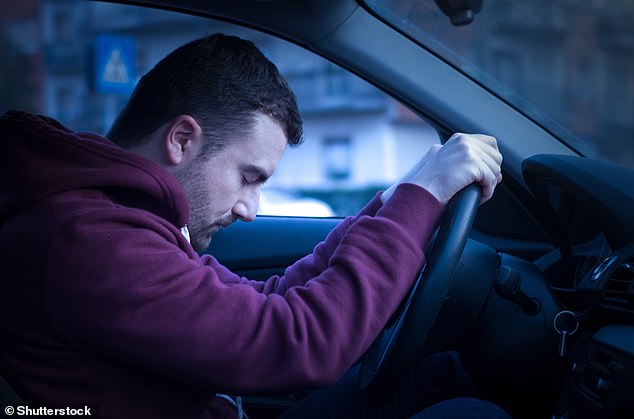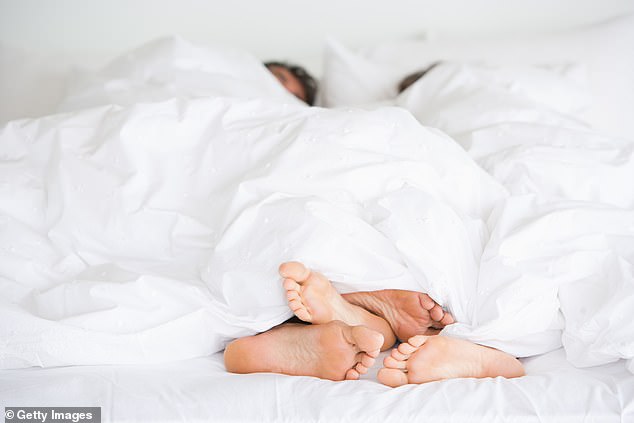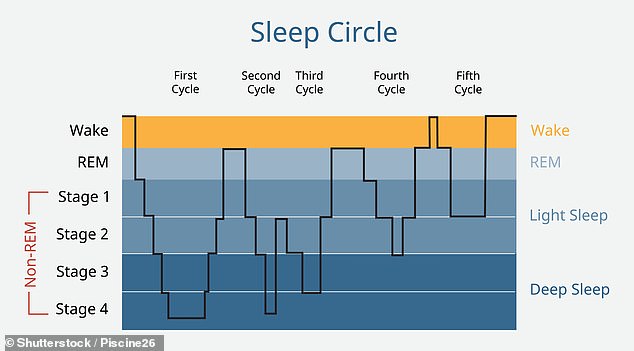Forget sleepwalking! Research reveals the most bizarre activities people do while they sleep, including handling sharp objects and DRIVING
Bizarre behavior that we accidentally exhibit during sleep is not just limited to walking and talking.
In fact, a new study has rounded up ten different ‘parasomnias’ – the various sleep disorders that consist of ‘unwanted physical phenomena’.
They include talking, walking, moving hands, laughing or crying, and aggressive movements such as hitting and kicking.
But more bizarre activities during sleep include eating, “handling sharp objects,” having sex and even driving, the researchers say.
Public awareness is growing about ‘sexsomnia’ – the unintentional initiation of sex during sleep – which is said to mainly affect men.
Researchers have revealed the top 10 different activities that people unintentionally do during their sleep – known as ‘parasomnias’

Driving as a parasomnia is different from when people get into a car awake and fall asleep at the wheel (file photo)
The new study was led by researchers from Semmelweis University in Budapest, Hungary and published in the Journal of Clinical Neuroscience.
“Getting up, getting out of bed and walking around are typical of the so-called non-rapid eye movement (NREM) parasomnias, which usually occur in the deep sleep phase of the sleep cycle,” says first author Vivian Correa.
‘In this case, the person is balancing between sleep and wakefulness.
‘This can sometimes be associated with handling sharp objects, leaving the house or driving a car.
“The half-asleep person can eat or even have sex.”
According to the Sleep Foundation, unintentionally having sex during sleep (sexsomnia) may be related to external factors such as stress and alcohol.
Often those who experience the disorder wake up during intercourse and feel confusion about how it started.
It can also raise issues around consent, which could land people in criminal courts.

Unintentionally having sex during sleep (sexsomnia) may be related to external factors such as stress and alcohol, according to the Sleep Foundation (stock image)
Meanwhile, driving as a parasomniac is different from when people get into a car awake and fall asleep at the wheel.
Instead, patients get out of bed, go outside to the car and start the engine – all while still sleeping.
Violence and even murder committed during sleep have previously been described in the academic literature, and while they are relatively rare, they also raise liability concerns.
For the study, researchers searched YouTube for various terms related to unintentional sleep activities between January and July 2022.
These terms include ‘sleepwalking’, ‘sleep walking’, ‘sleep eating’, ‘sleep sex’, ‘sleep talking’ and ‘sleep aggression’.
After an initial 758 results, they selected 224 videos of people engaging in unintentional sleep activities – 68 children, 40 older adults and 116 young adults.
Overall, the top three behaviors included sleep talking (full sentences or babble), emotional behaviors such as crying and laughing, sleepwalking, and random hand movements.

In humans, sleep is generally divided into ‘non-rapid eye movement’ or NREM sleep and rapid eye movement or REM sleep. A typical night’s sleep goes back and forth between phases
Analysis of the people in the videos also showed that older people had a significantly lower chance of sleepwalking compared to adults and children.
But older men were 40 times more likely compared to adults and children to perform aggressive movements in bed.
Older people showed emotional behavior, such as crying, less often than adults, and women showed this twice as often as men.
Interestingly, women were more than twice as likely to perform complex manual activities compared to men, such as handling electricity or kitchen tools.
Similarly, dangerous behaviors, such as leaving the house or driving while sleepwalking, were also significantly lower in older adults.
And adults sleep in full sentences more often than children and the elderly – possibly because we have more on our minds at this stage of life.
Although the exact cause of sleep talking is unclear, it could be due to stress or mental illness, claims the Sleep Foundation.
Sleep disorders affect 10 to 15 percent of children, experts say, but most grow out of them.
As a result, sleep disorders are less common in adulthood (three to four percent) and even rarer in old age.
However, patients usually seek medical attention after challenging or traumatic sleep episodes, which can be fatal.
The researchers hope their results will increase awareness of age- and sex-related risk factors.
In general, people can reduce the risk of parasomnias by trying to eliminate stress and anxiety, sleep deprivation, and alcohol consumption.
“We identified sleep-related behavioral patterns apparently consistent with parasomnias across all age and sex groups, which promises to improve approaches to risk management,” the team concludes.
While they acknowledge the limitations of studying YouTube videos alone, without demographic or historical data, they mention more comprehensive methods for future research.
